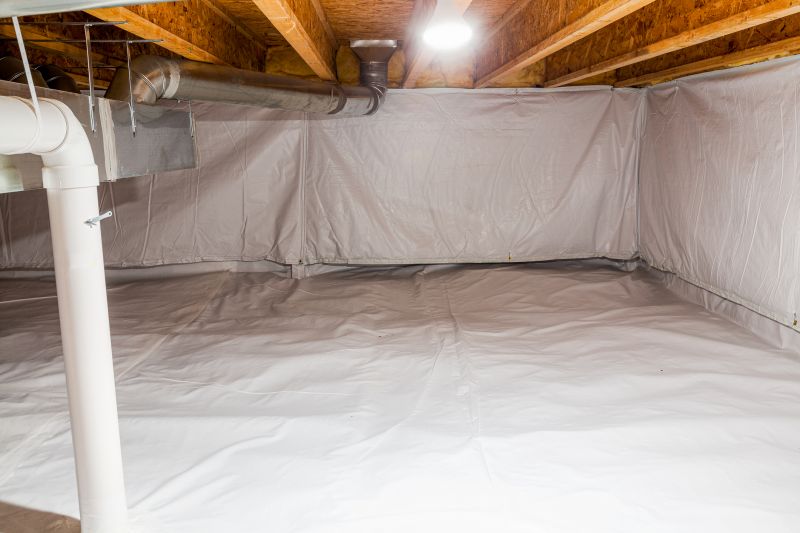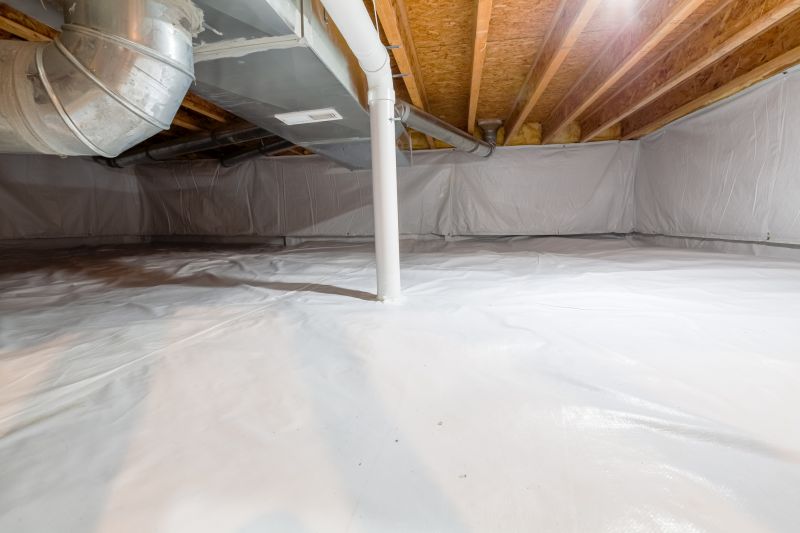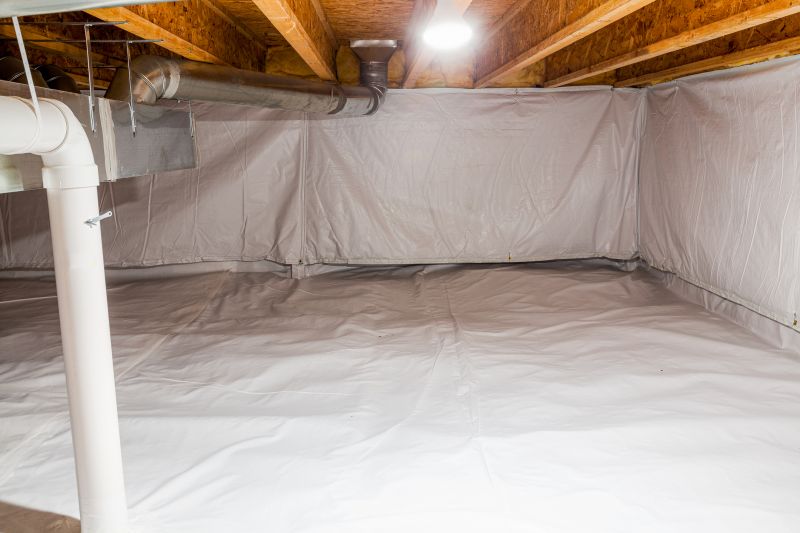Comprehensive Crawlspace Sealing for Long-Term Protection
Crawlspace encapsulation is a critical process that involves sealing and insulating the crawlspace to prevent moisture intrusion, improve air quality, and enhance energy efficiency. Proper encapsulation can significantly reduce mold growth, pest infestations, and structural damage caused by excess humidity.
Encapsulation creates a barrier against moisture, reducing the risk of mold and wood rot that can compromise structural integrity.
Sealing the crawlspace minimizes air leaks, leading to lower heating and cooling costs.
Reducing mold and dust from the crawlspace prevents airborne contaminants, promoting healthier indoor environments.
A sealed crawlspace deters pests and rodents from entering and nesting.

A fully sealed and insulated crawlspace with vapor barrier installed.

Interior view of encapsulation with insulation and vapor barrier.

Close-up of vapor barrier and sealing materials used in encapsulation.

A clean, dry, and insulated crawlspace ready for use.
Failure to encapsulate a crawlspace can lead to increased moisture levels, which promote mold growth, wood decay, and pest infestations. Studies show that unsealed crawlspaces can contribute to indoor air quality issues, with mold spores and dust mites thriving in damp environments. These conditions can cause allergies, respiratory problems, and structural damage over time. Encapsulation effectively mitigates these risks, creating a healthier and more stable environment.
| Benefits of Crawlspace Encapsulation | Risks of Not Encapsulating |
|---|---|
| Reduces mold growth | Increased mold and mildew |
| Improves indoor air quality | Higher humidity levels |
| Prevents pest infestations | Pest entry and nesting |
| Enhances energy efficiency | Higher heating and cooling costs |
| Protects structural components | Wood rot and structural damage |
| Decreases moisture-related odors | Persistent damp odors |
| Increases home value | Decreased property value |
